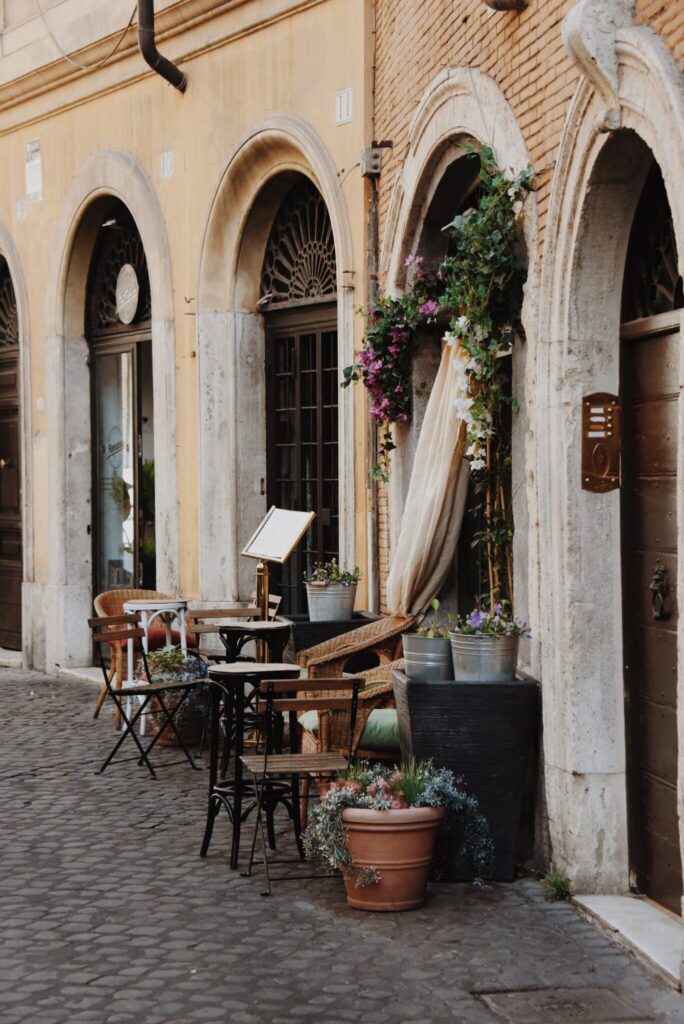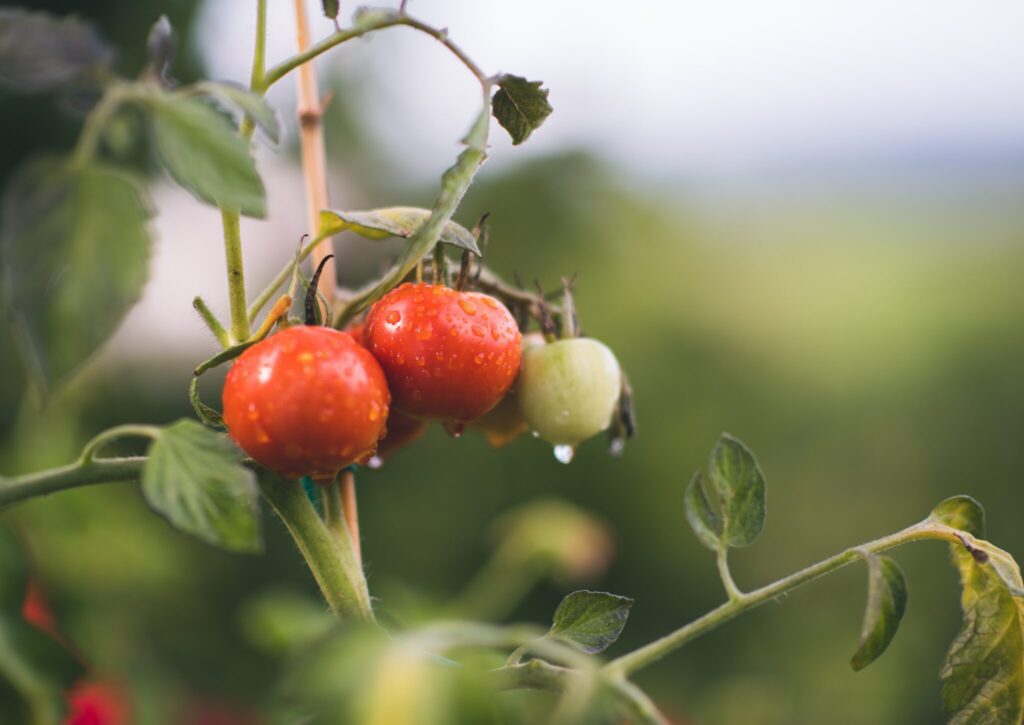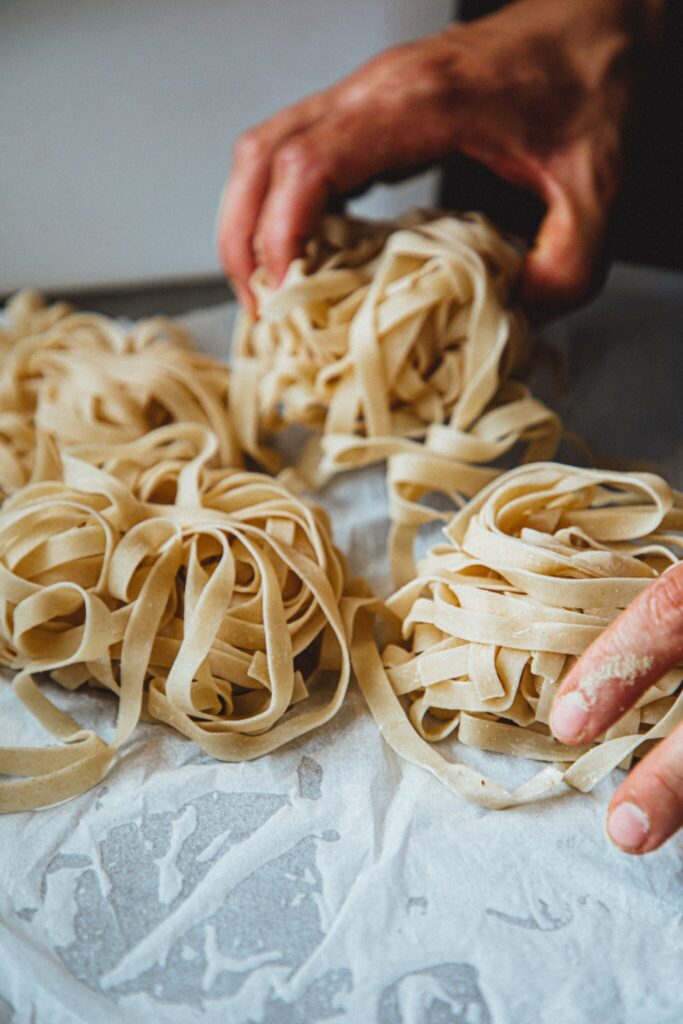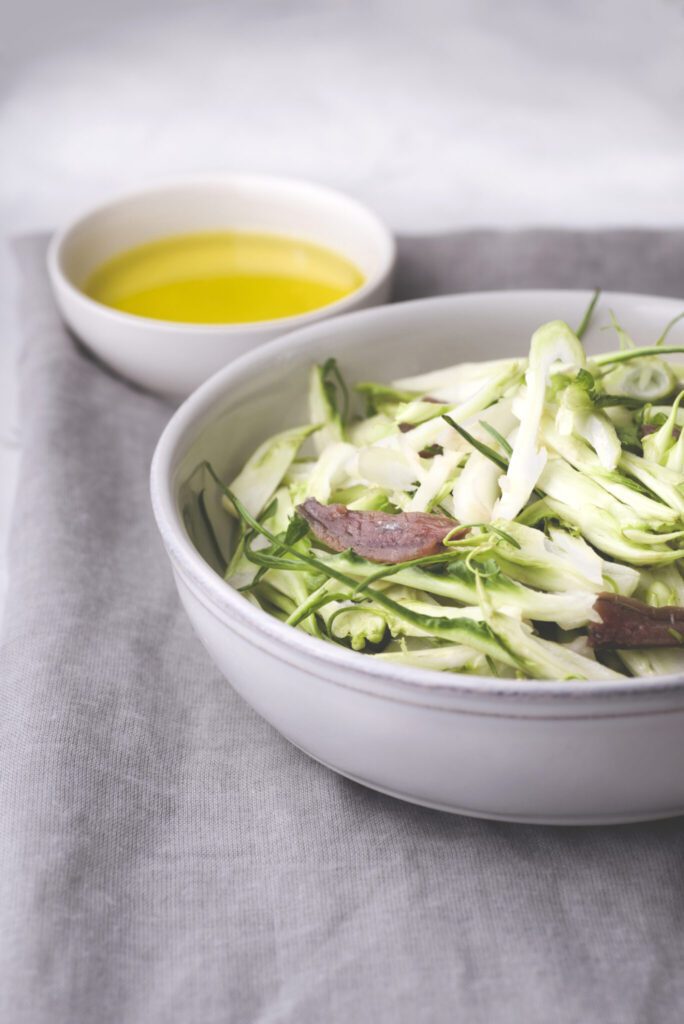Workation » Best Workation Locations and Why You Should Visit Them » Italy Workation – Working and Vacationing in Italy » What to Eat and Where in Italy » Foods Enjoyed by Locals in Rome
Foods Enjoyed by Locals in Rome
Rome is a food lover’s paradise. The city’s rich culinary traditions and diverse range of ingredients make it a hub for foodies from around the world. With its rich history, diverse culture, and access to fresh ingredients, Rome has become a hub for food lovers from all corners of the globe, and here are some reasons why Rome is renowned for its culinary reputation and what makes the city’s cuisine so unique.

The Influence of Culture
One of the key factors that has shaped Rome’s culinary tradition is its rich cultural history. The city has been inhabited for over 2,500 years, and during that time it has been shaped by a wide range of cultures and civilizations. From the ancient Etruscans to the powerful Roman Empire, Rome’s history has left an indelible mark on its cuisine.
For example, many of the dishes that are now considered to be staples of Roman cuisine, such as Carbonara and Cacio e Pepe, have their roots in the peasant cuisine of rural Lazio. These dishes were created as simple, filling meals for shepherds and farmers, and over time they became beloved staples of Roman cuisine. In addition, Rome has a vibrant Jewish community that has had a significant influence on the city’s culinary traditions. Dishes such as Carciofi alla Giudia (fried artichokes) and Saltimbocca alla Romana (veal with prosciutto and sage) have their roots in the Jewish cuisine of Rome and are now beloved by locals and visitors alike.
The Impact of Temperature and Climate
Another factor that has contributed to Rome’s culinary reputation is its warm, Mediterranean climate. The region enjoys long, hot summers and mild winters, which has allowed for the cultivation of a wide range of ingredients, including tomatoes, olives, and citrus fruits. The warm climate has also influenced the way that food is prepared and served in Rome. For example, many of the city’s most beloved dishes, such as Pizza al Taglio and Supplì, are served as street food or in casual settings, reflecting the city’s relaxed, outdoor lifestyle.
The Role of History and Tradition
Rome’s long history has also played a significant role in shaping its culinary reputation. The city has a rich culinary tradition that is deeply rooted in history and culture, and many of its most famous dishes have been enjoyed for centuries.
For example, dishes like Coda alla Vaccinara (oxtail stew) and Trippa alla Romana (tripe with tomatoes and pecorino cheese) have their roots in the working-class cuisine of Rome’s past. These hearty dishes were created as simple, filling meals for the city’s laborers and have since become beloved staples of Roman cuisine.
The Importance of Fresh Ingredients
Perhaps one of the most important factors that has contributed to Rome’s culinary reputation is the importance placed on fresh, high-quality ingredients. Romans have a deep appreciation for fresh, seasonal produce, and many of the city’s most famous dishes are made with ingredients that are grown locally or sourced from nearby regions.
For example, dishes like Cacio e Pepe and Carbonara are made with pecorino cheese that is produced in the nearby region of Lazio, while the city’s famous artichokes are grown in the nearby town of Ladispoli.
Rome’s culinary reputation is the result of a unique blend of factors, including its rich cultural history, warm climate, and access to fresh ingredients. The city’s cuisine is deeply rooted in tradition and history, and many of its most famous dishes have been enjoyed for centuries. Whether you’re savoring a bowl of pasta in a rustic trattoria or sampling the city’s street food delights, Rome is a city that celebrates food in all its forms. With its unique blend of history, culture, and ingredients, it’s no wonder that Rome has become a culinary destination for food lovers from around the world.
In Rome, the importance of food goes far beyond sustenance. It is a reflection of the city’s culture, traditions, and way of life. From the simple pleasures of a plate of pasta to the decadent indulgence of a traditional Roman dessert, food is an essential part of daily life in the city. Romans take pride in their cuisine, and visitors to the city are sure to be captivated by the vibrant flavors and rich history of the city’s culinary traditions.
When it comes to Roman cuisine, there is no shortage of delicious dishes to choose from. From classic pasta dishes like Carbonara and Cacio e Pepe to street food favorites like Supplì and Pizza al Taglio, the city’s culinary traditions are diverse and flavorful. Visitors to the city can also enjoy a wide range of seafood dishes, such as Fritto Misto (mixed fried seafood) and Spaghetti alle Vongole (spaghetti with clams), which take advantage of the city’s proximity to the Mediterranean Sea.


One of the key characteristics of Roman cuisine is its simplicity. Many of the city’s most famous dishes are made with just a few ingredients, but the combination of flavors is often breathtaking. For example, Spaghetti alla Gricia is made with just guanciale (cured pork cheek), pecorino cheese, and black pepper, but the result is a dish that is rich, savory, and deeply satisfying.
Another hallmark of Roman cuisine is the importance placed on using fresh, seasonal ingredients. Whether it’s the sweet, juicy tomatoes that are used in dishes like Pomodoro e Basilico or the tender artichokes that are the star of Carciofi alla Romana, Romans take pride in using only the best ingredients in their cooking.
In addition, Romans have a deep appreciation for the role that food plays in their social lives. Meals are often enjoyed with family and friends, and the act of sharing a meal is seen as a way to strengthen bonds and foster a sense of community. It’s not uncommon to see groups of people enjoying a leisurely lunch or dinner in one of the city’s many outdoor cafes or trattorias.
Overall, Rome’s culinary reputation is the result of a unique blend of factors, including its rich cultural history, warm climate, and access to fresh ingredients. The city’s cuisine is deeply rooted in tradition and history, and many of its most famous dishes have been enjoyed for centuries. Whether you’re savoring a bowl of pasta in a rustic trattoria or sampling the city’s street food delights, Rome is a city that celebrates food in all its forms. With its unique blend of history, culture, and ingredients, it’s no wonder that Rome has become a culinary destination for food lovers from around the world.
From hearty pastas and stews to decadent desserts and gelato, Rome is a city that celebrates food in all its forms. Here are the popular foods eaten and enjoyed by locals in Rome:
Carbonara
Carbonara is a classic Roman dish that is made with spaghetti, eggs, pancetta, and pecorino cheese. The dish is traditionally served with a sprinkle of black pepper and is known for its creamy texture and rich flavor.
Carbonara has its roots in the peasant cuisine of Rome, where it was created as a simple, filling meal for the working class. Today, it is a beloved dish that is enjoyed by locals and visitors alike, particularly in the city’s trattorias and osterias.

Cacio e Pepe
Cacio e Pepe is another classic Roman pasta dish that is made with spaghetti, pecorino cheese, and black pepper. The dish is known for its simplicity and its bold, spicy flavor. Cacio e Pepe has its roots in the rural cuisine of Lazio, the region that surrounds Rome. It was originally created as a hearty meal for shepherds and farmers, who would use the ingredients that were readily available to them.
Saltimbocca alla Romana
Saltimbocca alla Romana is a classic Roman dish that is made with veal, prosciutto, and sage. The veal is typically pounded thin and then topped with prosciutto and sage before being pan-fried in butter.
Saltimbocca alla Romana has its roots in the culinary traditions of Rome’s Jewish community, who are known for their expertise in preparing meats. Today, it is a beloved dish that is served in many of the city’s traditional restaurants and trattorias.
Carciofi alla Romana
Carciofi alla Romana is a traditional Roman dish that is made with artichokes, garlic, and mint. The artichokes are typically stuffed with a mixture of garlic and mint before being braised in olive oil and white wine.
Carciofi alla Romana has its roots in the traditional cuisine of Rome, where artichokes were a popular ingredient in many dishes. Today, it is a beloved dish that is enjoyed throughout the city, particularly in the spring when artichokes are in season.
Supplì
Supplì is a popular Roman street food that is made with a mixture of rice, tomato sauce, and mozzarella cheese. The mixture is then coated in breadcrumbs and deep-fried until crispy.
Supplì has its roots in the traditional cuisine of Rome, where it was created as a simple, filling snack for the working class. Today, it is a beloved street food that is enjoyed by locals and visitors alike, particularly in the city’s many food markets and outdoor festivals.
Pizza al Taglio
Pizza al Taglio, or “pizza by the slice,” is a popular street food in Rome. The pizza is made with a thick, crispy crust and is typically topped with a variety of ingredients, including cheese, tomatoes, and cured meats.
Pizza al Taglio has its roots in the post-World War II era, when Rome experienced a surge in population and an increase in demand for fast, affordable food. Today, it is a beloved staple of Roman cuisine, and can be found in pizzerias and street vendors throughout the city.


Trippa alla Romana
Trippa alla Romana is a classic Roman dish that is made with tripe, tomatoes, onions, and pecorino cheese. The dish is known for its rich, hearty flavor and is typically served with crusty bread.
Tripe has long been a popular ingredient in Roman cuisine, and Trippa alla Romana is a testament to the city’s love of this unique ingredient. While tripe may not be for everyone, those who try this dish are sure to be impressed by its rich flavor and satisfying texture.
Puntarelle
Puntarelle is a traditional Roman salad that is made with puntarelle, a type of chicory, and a tangy dressing made from anchovies, garlic, and vinegar. The salad is typically served as a refreshing appetizer or side dish.
Puntarelle has its roots in the traditional cuisine of Rome, where it was created as a simple, refreshing salad to accompany hearty meat dishes. Today, it is a beloved staple of Roman cuisine and can be found in many of the city’s traditional restaurants and trattorias.
Bucatini all'Amatriciana
Bucatini all’Amatriciana is a classic Roman pasta dish that is made with bucatini, a type of thick spaghetti, and a sauce made from tomatoes, guanciale (cured pork jowl), and pecorino cheese. The dish is known for its rich, smoky flavor and is a favorite of locals and visitors alike.
Bucatini all’Amatriciana has its roots in the town of Amatrice, located in the region of Lazio. The dish was created as a hearty meal for the working class, and has since become a beloved staple of Roman cuisine.
Maritozzo
Maritozzo is a traditional Roman sweet bread that is typically filled with whipped cream. The bread is known for its light, fluffy texture and sweet, creamy filling.
Maritozzo has its roots in the traditional cuisine of Rome, where it was created as a sweet treat for special occasions. Today, it is a beloved dessert that can be found in many of the city’s bakeries and cafes.

And of course the desserts:

- Tiramisu – A classic Italian dessert made with layers of ladyfingers, espresso, and mascarpone cream, topped with cocoa powder.
- Cannoli – Crispy fried pastry shells filled with sweet ricotta cheese and often flavored with chocolate chips, candied fruits, or pistachios.
- Panna Cotta – A silky, creamy dessert made with sweetened cream and gelatin, often served with fresh berries or fruit compote.
- Gelato – A type of Italian ice cream that is denser and creamier than regular ice cream, made with milk, sugar, and natural flavors like fruit or chocolate.
- Crostata di Ricotta – A sweet tart made with a shortbread crust filled with sweet ricotta cheese and often flavored with lemon zest or orange blossom water.
- Torta Caprese – A rich, dense chocolate and almond cake that is gluten-free and often served with a dusting of powdered sugar.
- Sfogliatelle – A shell-shaped pastry filled with sweetened ricotta cheese and often flavored with candied orange peel or cinnamon.
- Bigne alla Crema – A type of cream puff filled with sweet vanilla cream and often topped with powdered sugar.
- Zuppa Inglese – A layered dessert made with sponge cake, liqueur, custard, and often topped with whipped cream and fruit.
- Crostata di Frutta – A fruit tart made with a shortbread crust filled with fresh seasonal fruit and often glazed with apricot jam.
- Mostaccioli – A spicy, cake-like cookie made with honey, cocoa powder, and ground almonds, often flavored with anise or cinnamon and sometimes dipped in chocolate.

These desserts can be found in many traditional Roman bakeries and cafes, as well as in high-end restaurants and gelaterias.
Find Where to Visit and What to Eat on Your Workation
For your Italy Workation, the right region to visit could make all the difference between enjoying your stay and finding your best work-life balance. Famous works of art and unforgettable ancient monuments meet incredible landscapes and traditional villages with histories spanning two thousand years. Look for the magnificent blue water, stroll through preserved medieval streets, and learn about the specific flavors helping create the unique vision of factors that make Italy.
Find the information you need to give you the best Italy Workation possible before allowing us to accelerate your productivity and maximize your experience with an authentic connection to Italy. Take one step closer to planning your Workation or learn more about What Festivals People Celebrate in Italy.
More articles on Italian food and drinks
- Foods Enjoyed by Locals in Northern Italy
- Discovering the Hidden Gems of Italian Cuisine During Your Workation
- Foods Enjoyed by Locals in Tuscany
- What to Eat and Where in Italy
- Italian Coffee Culture Guide
- Popular Food Festivals in Italy
- Popular Italian Wines to Enjoy During Workation
- Foods Enjoyed by Locals in Venice

